The California gold rush had two types of gold mining: the complex underground mines like the one we toured in Grass Valley, and panning, (aka placer mining, pronounced “plasser.” This latter form is what you envision when you think of the “49ers” prospecting during the days of the California gold rush. What we didn’t realize is that this form of mining started my using natural water runoff, then wound up with massive artificially created rivers which created long-term damage to the landscape.
Columbia State Historical Park is devoted to preserving the history of this second mining form. Located due east of San Francisco, the town is a living history site, with the ability to experience the gold rush days personally. Here students can pan for gold, ride a stage coach, watch blacksmiths at work, try their hand at 19th century bowling and throw back a sarsaparilla at the local saloon. Local merchants hawk fancy candy, ice cream and historical trinkets, and the museum is fascinating. We sampled them all. As our first mining stop told about the influx of Cornish miners, this stop details the history of Chinese immigrants, imported to help build the railroad infrastructure.
The park is fun and educational, and admission is free. We recommend it for a fun outing.
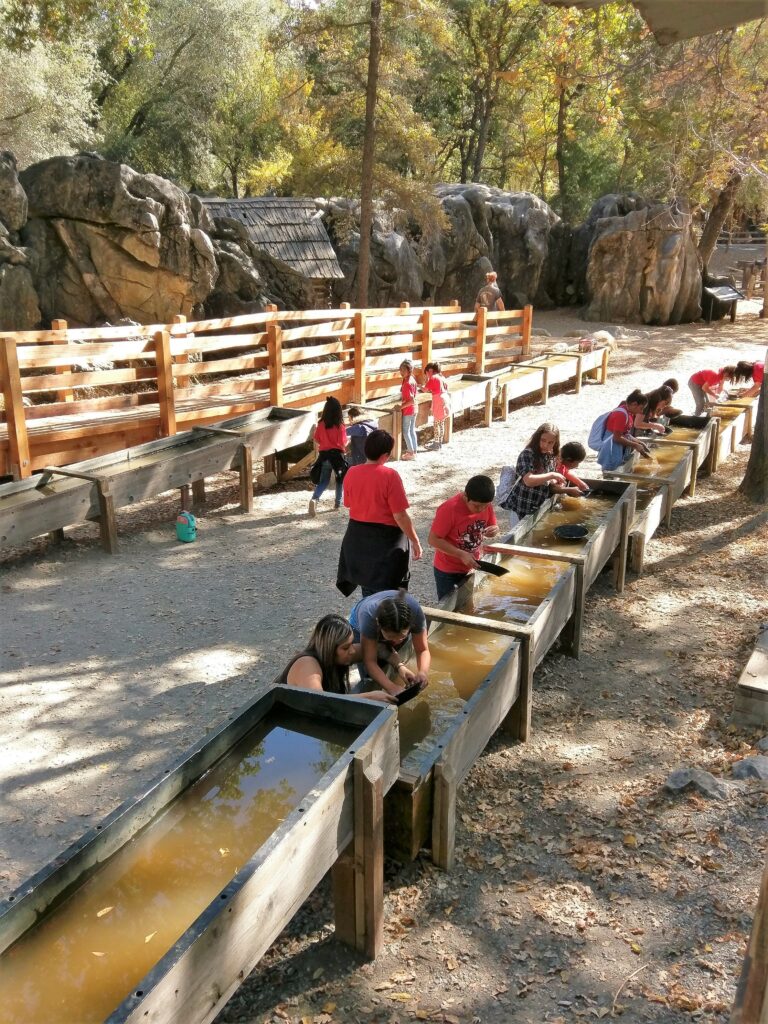
Panning for gold is a key attraction in the town. The exposed rocks in the background are the results of large scale placer mining, meaning the entire area that you see has already been washed down at least 10 feet or more. 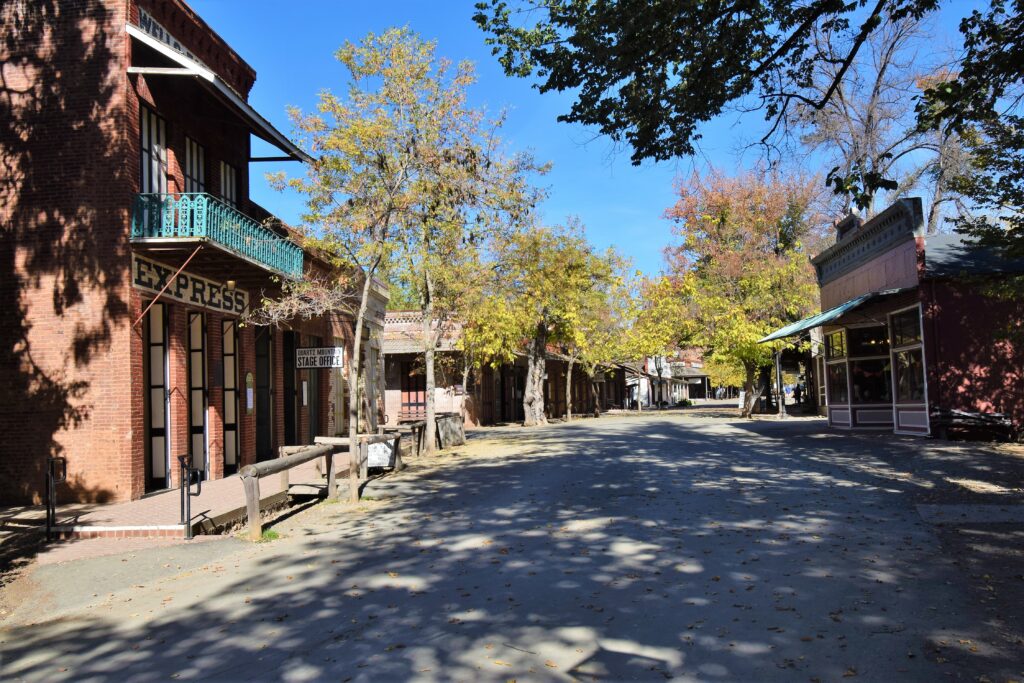
Stagecoaches still roll down this main street. 
It is easy to picture yourself in the Old West. 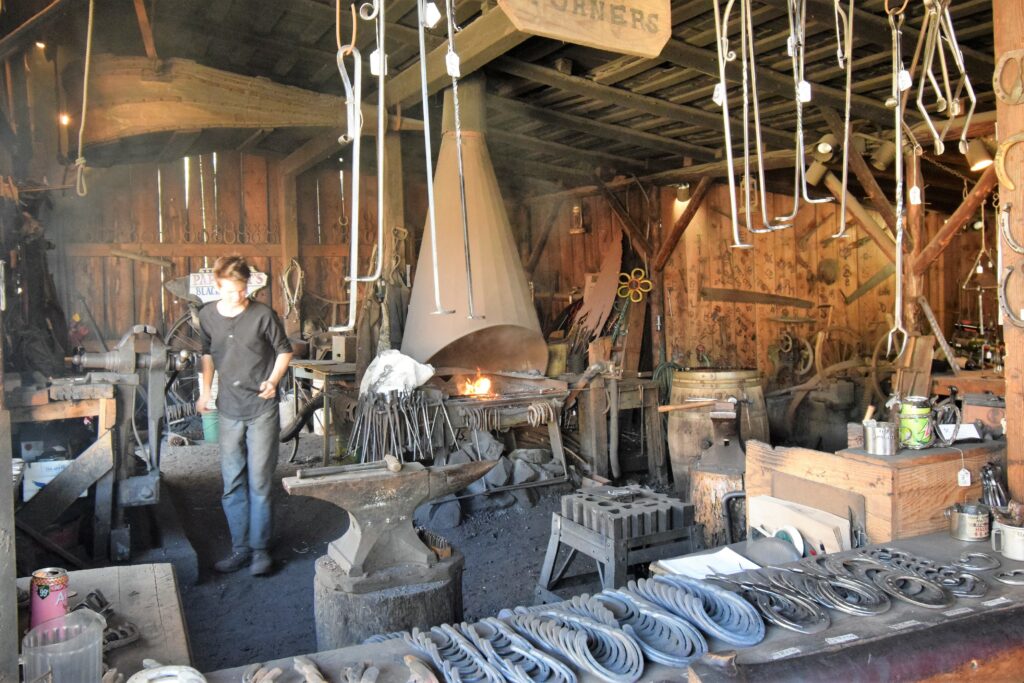
And the blacksmith shop still works. 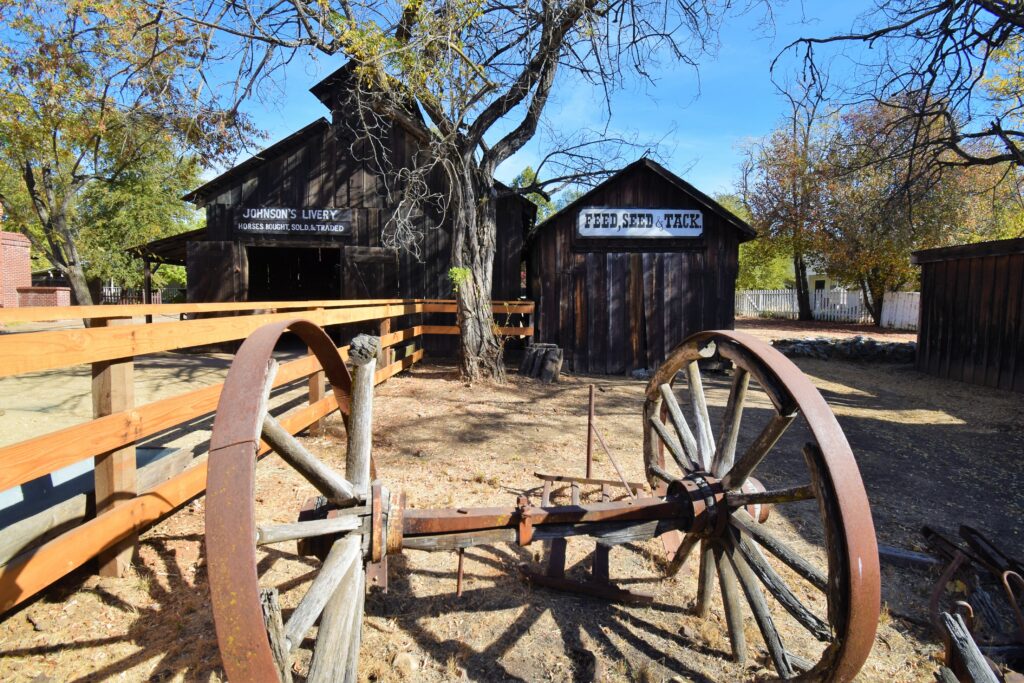
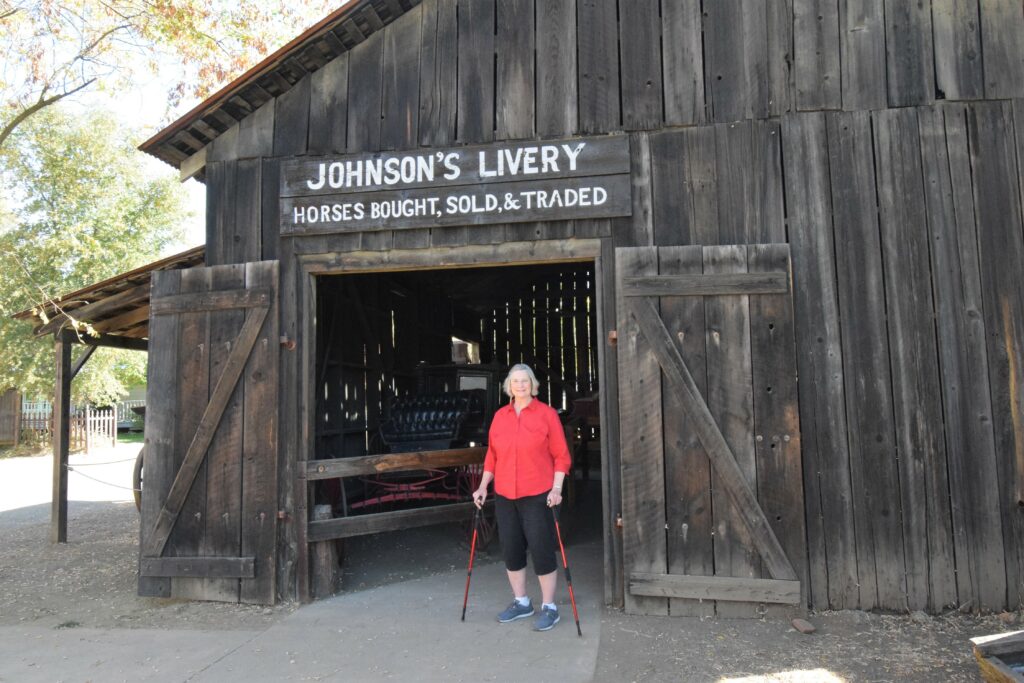
I teased Ellen about “going to see a man about a horse.” 
An original bank safe. Some of the artifacts here were used in a Gary Cooper movie, hence his poster. 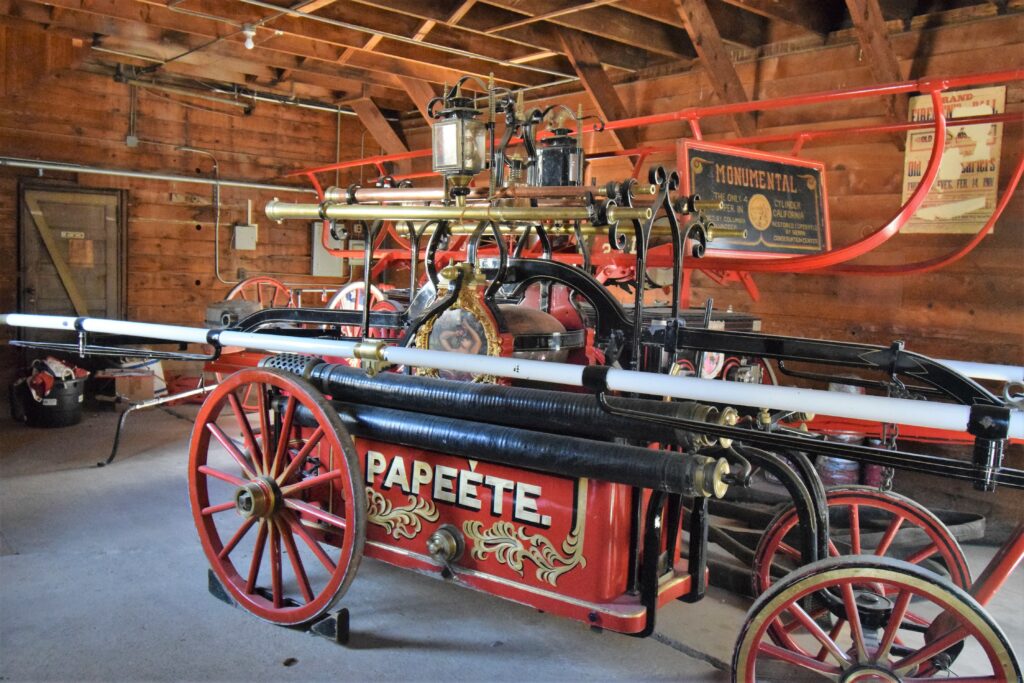
A hand pumper fire truck, imported after a fire destroyed most of the town. 
Enjoying a sarsaparilla at the saloon, along with a thoroughly delicious pizza.
And lastly, here is a link to a one minute video that demonstrates the 19th century bowling alley in the town! Click here.